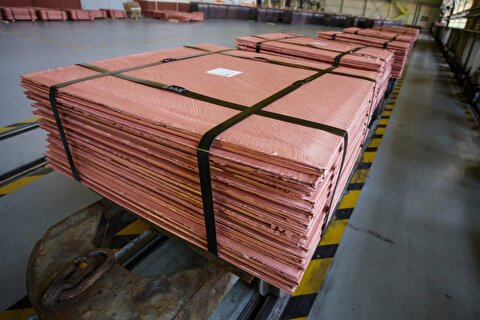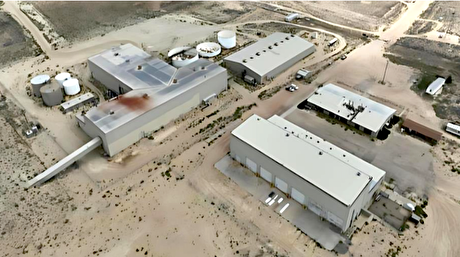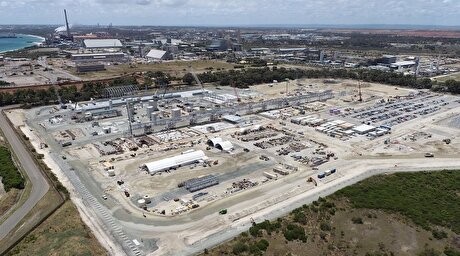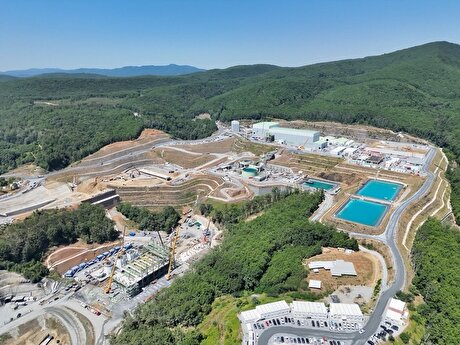
Iran's Q1 Trade With EU Tops €1b

Germany, Italy and the Netherlands were Iran’s top three trading partners in the European bloc with bilateral exchanges standing at €491.18 million, €171.83 million and €128.36 million respectively.
Iran’s trade with Luxembourg (€488,018), Slovakia (€3.32 million) and Bulgaria (€43.7 million) increased by 589.68%, 141.4% and 106.76% respectively year-on-year—the highest among EU states.
Trade with Malta (€1,536 million), Finland (€1.87 million), Ireland (€3.89 million), Sweden (€9.3 million) and Romania (€20.86 million) saw the sharpest declines of 98.8%, 77.12%, 77%, 67.17% and 65.21% respectively.
Eurostat is a directorate of the European Commission located in Luxembourg. Its main responsibilities are to provide statistical information to EU institutions and promote the harmonization of statistical methods across its member states and candidates for accession. Organizations in different countries that cooperate with Eurostat are summarized under the European Statistical System.
Exports Rise 26%
Iran exported €225.61 million worth of commodities to the EU during the three-month period, indicating a 26.85% rise compared with the similar period of the previous year.
The main export destinations over the period were Germany (€66.98 million), the Netherlands (€46.78 million), Italy (€36.17 million), Spain (€23.13 million) and Belgium (€13.96 million).
Iran’s exports to Luxembourg (€363,540), the Netherlands (€46.78 million) and Ireland (€139,214) experienced the highest year-on-year growth rates of 1,161%, 877% and 256% respectively.
This is while exports to Greece (€1.55 million), Latvia (€201,234) and Czechia (€143,247) fell by 66.88%, 61.34% and 61.31% YOY respectively, which are the sharpest among EU member states.
The exported goods mainly included edible fruit and nuts; peel of citrus fruits or melons worth €70.95 million; mineral fuels, mineral oils and products of their distillation; bituminous substances; mineral waxes with €41.69 million; plastics and articles thereof worth €20.94 million; coffee, tea, maté and spices worth €15.38 million; iron and steel worth €11.03 million; pharmaceutical products worth €8.7 million; products of animal origin, not elsewhere specified or included worth €8.35 million; carpets and other textile floor coverings worth €6.65 million; lac, gums, resins and other vegetable saps and extracts worth €6.45 million; iron and steel products worth €5.81 million; fertilizers with €5.43 million; and nuclear reactors, boilers, machinery and mechanical appliances worth €4.47 million.
Imports Fall 5.08%
Imports from the EU dropped by 5.08% to stand at €940.43 million during the three months under review.
The top five exporters from the European bloc to Iran were Germany with €424.19 billion, Italy with €135.66 million, the Netherlands with €81.58 million, France with €50.22 million and Denmark with €47.9 million worth of shipments to Iran.
Bulgaria with €36.93 million, Luxembourg with €124,478 and Slovakia with €1.62 million were the EU countries whose exports to Iran saw the highest YOY increase (215%, 196% and 157% respectively).
Malta with €1,536, Finland with €1.13 million and Ireland with €3.75 million experienced the sharpest YOY decline in exports to Iran (98.65%, 85.74% and 77.77% respectively).
The imports mainly included nuclear reactors, boilers, machinery and mechanical appliances; parts thereof worth €204.61 million; cereals worth €167.07 million; pharmaceutical products worth €105.43 million; optical, photographic, cinematographic, measuring, checking, precision, medical or surgical instruments and apparatus, as well as parts worth €84.63 million; electrical machinery and equipment and parts; television image and sound recorders and reproducers, as well as parts worth €44.2 million; and oilseeds, oleaginous fruits, grains, seeds, fruit, industrial and medicinal plants, as well as straw and fodder worth €33.31 million.
Rail or tramway locomotives, rolling-stock, track fixtures, fittings and parts, as well as mechanical traffic signaling equipment with €25.66 million; chemical products worth €23.6 million; organic chemicals worth €21.02 million; plastic products worth €15.97 million; and miscellaneous edible preparations worth €15.54 million were other major imports.
Other imported products included manmade fibers worth €14.81 million; tanning or dying extracts; tannins and their derivatives; dyes, pigments and other coloring matter; paints and varnishes; putty and other mastics; inks worth €13.2 million; essential oils and resinoids; perfumery, cosmetic or toilet preparations worth €12.33 million; paper and paperboard; articles of paper pulp, of paper or of paperboard worth €8.65 million; albuminoidal substances; modified starches; glues; enzymes with €7.65 million; residues and waste from food industries; prepared animal fodder with €7.63 million; live animals €6.39 million; rubber and articles thereof worth €6.38 million; and fertilizers with €4.97 million.
Trade in March
Iran’s trade with EU member states in March stood at €370.29 million to register a downturn of 17.2% compared to March 2019.
Germany, Italy and the Netherlands were Iran’s top three trading partners in March with commercial exchanges standing at €184.14 million, €50.01 million and €38.13 million respectively.
Iran’s trade with Luxembourg (€61,422), Germany (€184.14 million) and the Netherlands (€38.13 million) increased by 1,312%, 37.66% and 17.56% respectively year-on-year—the highest among EU states.
Trade with Romania (€1.15 million), Finland (€185,208) and Cyprus (€205,610) saw the sharpest declines of 96.82%, 94.45% and 80.01% respectively.
Iran exported €59.35 million worth of commodities to the EU during March, indicating a 5.14% fall compared with last year’s March.
The main export destinations in March were the Netherlands (€17.5 million), Germany (€17.27 million) and Italy (€6.2 million).
Iran’s exports to Portugal, Luxembourg and the Netherlands experienced the highest year-on-year growth rates of 2,383%, 1,312% and 884% respectively.
This is while exports to Ireland, Finland and Czech Republic fell by 98.85%, 88.56% and 84.42% YOY respectively, which are the sharpest among EU member states.
Imports from the EU dropped by 19.16% to stand at €310.94 million during March.
The top three exporters from the European bloc to Iran were Germany with €166.86 million, Italy with €43.8 million and the Netherlands with €20.63 million worth of shipments to Iran.
Bulgaria with €8.24 million, Spain with €14.37 million and Germany with €166.86 million were the EU countries whose exports to Iran registered the highest YOY increase (71.83%, 43.94% and 43.37% respectively).
Romania with €14,985, Finland with €176,662 and Cyprus with €104,270 experienced the sharpest YOY decline in exports to Iran (99.95%, 94.59% and 89.36% respectively).


Column: EU’s pledge for $250 billion of US energy imports is delusional

Ramaco Resources secures five year permit for Brook rare earth mine in Wyoming

Anglo American posts $1.9B loss, cuts dividend

Southern Copper expects turmoil from US-China trade war to hit copper

BHP, Vale accused of ‘cheating’ UK law firm out of $1.7 billion in fees

Trump tariff surprise triggers implosion of massive copper trade

Southern Copper eyes $10.2B Mexico investment pending talks

St Augustine PFS confirms ‘world-class’ potential of Kingking project with $4.2B value

Copper price collapses by 20% as US excludes refined metal from tariffs

Caterpillar sees US tariff hit of up to $1.5 billion this year

Uranium Energy’s Sweetwater plant on fast track for in-situ mining approval

Tianqi Lithium Australia JV says it is prioritizing long-term viability of refinery

First Quantum scores $1B streaming deal with Royal Gold

One dead, five missing after collapse at Chile copper mine

Eldorado to kick off $1B Skouries mine production in early 2026

Newmont nets $100M payment related Akyem mine sale

Idaho Strategic rises on gold property acquisition from Hecla

Goldman told clients to go long copper a day before price plunge

Gold price rebounds nearly 2% on US payrolls data

Caterpillar sees US tariff hit of up to $1.5 billion this year

Uranium Energy’s Sweetwater plant on fast track for in-situ mining approval

Tianqi Lithium Australia JV says it is prioritizing long-term viability of refinery

First Quantum scores $1B streaming deal with Royal Gold

One dead, five missing after collapse at Chile copper mine

Eldorado to kick off $1B Skouries mine production in early 2026

Newmont nets $100M payment related Akyem mine sale

Idaho Strategic rises on gold property acquisition from Hecla

Goldman told clients to go long copper a day before price plunge














